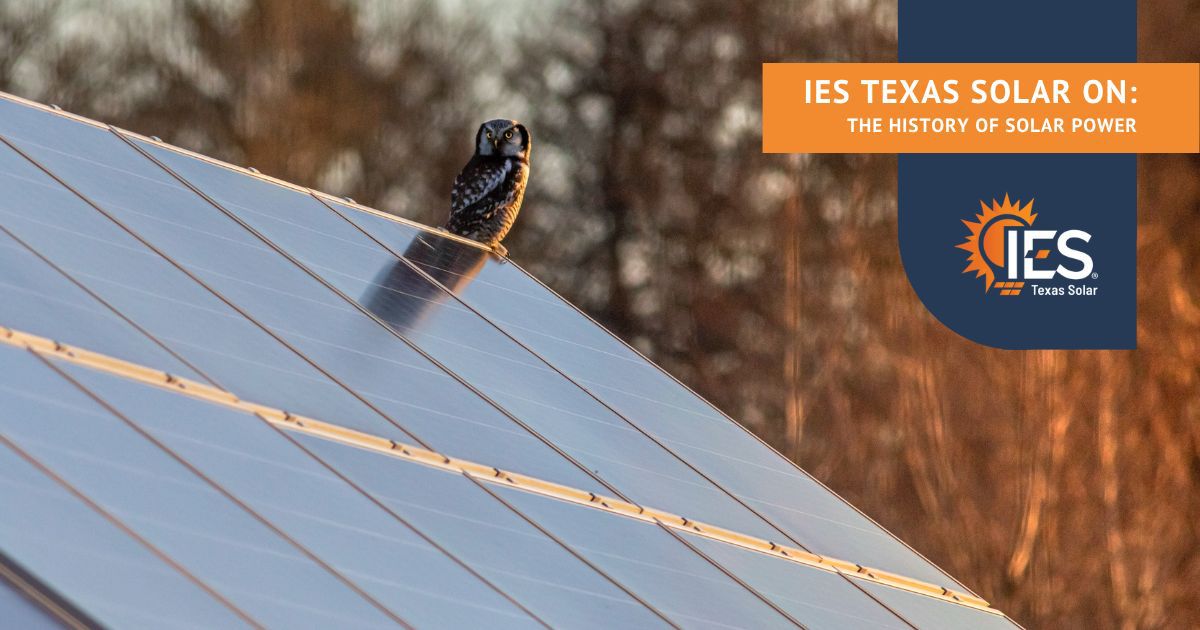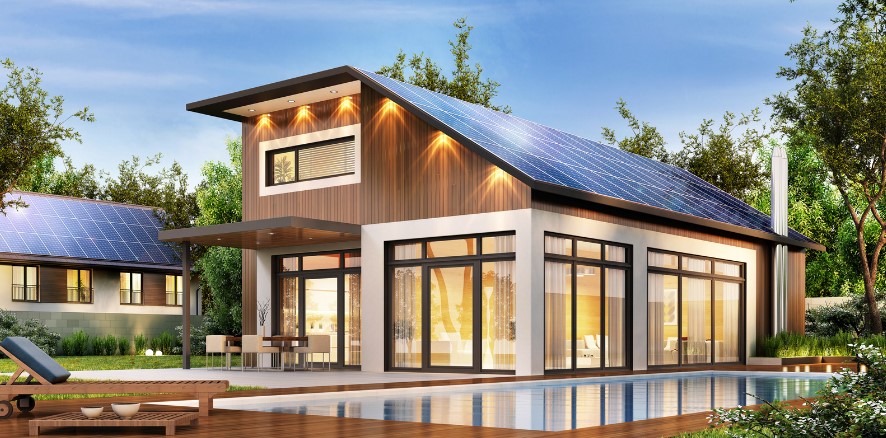
Time to read: 6 minutes
December 1, 2022
Have you ever caught a shimmer out of the corner of your eye while on a walk or a drive and noticed a shiny, futuristic solar panel adorning the roof? It seems like every residential area has several (if not more) homes with a set of cutting-edge solar panels adorning their roofs in 2022. This technology is extremely popular now, and more Texans are installing solar arrays with backup batteries and generators every day.
We’ve previously covered some of the incredible things that this technology is effective for such as:
- Grid failures and power outages
- Farms and ranches
- Backup power that holds up against storms
- Selling your extra energy back to your utility provider
It’s easy to see the benefits now, but has it always been this popular? Where did the technology for solar panels come from? Are they a more recent technology? In this article, we’re going to be exploring a brief history of solar powered technology in the United States.
The beginning of solar technologies
When did the development of solar technologies start? Take a guess! 30 years ago? Maybe even 50 years ago? The truth is that solar technology as we know it was first developed in the 1860’s. A popular belief at the time was that coal would become increasingly scarce in the near future. This led developers to begin experimenting with ways to produce power. Inventors like Augustin Mouchot, the inventor of a solar-powered engine that turned solar energy into steam power in France, strongly believed this would be the case.
Though he was able to create several ingenious inventions that used solar energy, his predictions on coal scarcity weren’t completely on the money. An Anglo-French free trade agreement between France and Great Britain called the Cobden-Chevalier treaty was signed in 1860, and its economic benefits reduced the price of coal while increasing the ease of transportation for the resource. This ultimately reduced the need for alternative energy in France at the time.

Early solar technology in America
On the other side of the Atlantic ocean in 1884, an American inventor in New York named Charles Fritts was able to create and use the world’s first working selenium cells to create the very first rooftop solar array. For clarity, a selenium cell is a photoelectric device used to generate or control an electric current. The selenium cells created by Fritts would also later be used effectively for things like light sensors used for photo cameras. While this was a monumental feat for alternative energy, there were a couple of things that kept this technology from being viable at the time.
Financially, the types of solar arrays created by Fritts were incredibly expensive. The conversion electrical efficiency of these selenium cells were approximately 1%. While this was still a massive leap for the progress of solar technology, other resources used in the early 20th century caused its development to slow to a crawl. Petroleum and coal were far more convenient and economically reliable at the time, making it unreasonable to continue the development of such a costly technology until the 1940’s.
In the United States, engineers made incredible strides with solar technology in the 1940s. Now we fast forward to 1946, where an American engineer named Russell Ohl successfully patented the very first modern solar cell. This led to the development of the first crystalline silicon cell (c-silicon cell) in 1954, which is the most widely used cell in solar panels today.
The creation of c-silicon cells caused another rapid advance in solar technology, and the Hoffman Electronics corporation was able to improve c-silicon cells, increasing their efficiency by roughly 10 percent while also lowering production costs. This heavily contributed to the creation of Vanguard I, the very first solar powered satellite that was launched on March 17, 1958. Now every satellite used since the 1960’s has used solar panels to generate electricity.
U.S. Solar power in the 1970’s
While solar technology had gone from a stand still to a state of rapid development from the 1940’s to the 1960’s, solar still wasn’t very viable for powering homes. This would begin to change over the next few decades as different events around the world, such as the 1979 energy crisis, would cause the U.S. to rethink its stance on renewable and alternative energy sources. Different economic factors that mostly had to do with oil caused an increase in the number of solar powered system installations in the 1970’s. By 1979 the Oil Shock (or second oil crisis) sent ripples across the economy, raising the cost of fuel from .72 cents to $1.42.
In an effort to increase renewable energy in the U.S., President Jimmy Carter set a target goal of having 20% of the energy generated in the U.S.to come from solar. This effort was later dashed when the next U.S. President Ronald Reagan removed all funding for solar research. As a side note, President Carter installed solar hot water panels (a type of solar powered system used to heat water) on the roof of the White House, but they were later removed by President Reagan.

U.S. Solar power in the 1980’s to the present
Between the 1980s and 1990s, solar technology started to be integrated into several different consumer products. Companies began creating toys, watches, and calculators that used PV (photovoltaic) modules. There were also stand-alone systems that were not grid connected and were used to generate and store power into a storage system like a battery. It wasn’t until the 1990s that solar technology developers began engineering and developing PV modules that would be connected to a power grid in the U.S., and towards the late 90’s the U.S. was the leader in solar power generation.
Several factors also contributed to the rapid boom in solar technology during the 1990s.
- Concerns about global warming
- Oil and gas issues like supply and prices
- Increased priority for renewable energy on the power grid thanks to feed-in tariffs which increased investment in solar powered systems
Today, compared to the rising cost of other resources like natural gas, solar power is the cheapest energy source on the planet.
In future posts, we will be going over some of these topics more thoroughly. Topics like the different types of solar technologies that were created and more detailed histories of the solar industry in the U.S. will definitely be subjects that we will cover in a future series.
Your electric bills are history when you switch to solar
What else can you say is history when it comes to solar energy? Your electric bills. Power outages are also a thing of the past once you install a solar powered system with backup batteries and a Generac® home standby generator. More Texans than ever are turning to IES Texas Solar for solar power solutions and backup generators for harsh winters and uncertain grid conditions. Learn more about home standby generators in our article that explores this awesome and reliable technology here!
If you are considering switching to solar for your home or business, reach out to us by going to our website, iestxsolar.com, or by giving us a call at (855) 447-6527.